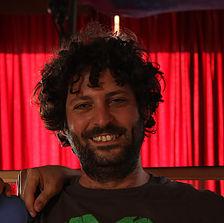-
Barak Sober
-
Tel Aviv University

"Iron Age Hebrew Epigraphy in the Silicon Age - An Algorithmic Approach To Study Paleo-Hebrew Inscriptions"
Abstract: Handwriting comparison and identification, e.g. in the setting of forensics, has been widely addressed over the years. However, even in the case of modern documents, the proposed computerized solutions are quite unsatisfactory. For historical documents, such problems are worsened, due to the inscriptions’ preservation conditions. In the following lecture, we will present an attempt at addressing such a problem in the setting of First Temple Period inscriptions, stemming from the isolated military outpost of Arad (ca. 600 BCE). The solution we propose comprises: (A) Acquiring better imagery of the inscriptions using multispectral techniques; (B) Restoring characters via approximation of their composing strokes, represented as a spline-based structure, and estimated by an optimization procedure; (C) Feature extraction and distance calculation - creation of feature vectors describing various aspects of a specific character based upon its deviation from all other characters; (D) Conducting an experiment to test a null hypothesis that two given inscriptions were written by the same author. Applying this approach to the Arad corpus of inscriptions resulted in: (i) The discovery of a brand new inscription on the back side of a well known inscription (half a century after being unearthed); (ii) Empirical evidence regarding the literacy rates in the Kingdom of Judah on the eve of its destruction by Nebuchadnezzar the Babylonian king.
Barak Sober received his B.Sc. degree in Mathematics and Philosophy from Tel Aviv University, Israel, in 2006. He received his M.Sc. in Applied Mathematics (summa cum laude) on the topic of “Handwritten Character Stroke Reconstruction” in 2013. He is currently pursuing his PhD in Applied Mathematics on the topic of “Approximation of Manifolds from Scattered Data”. His interests include approximation theory, machine learning, image processing and archaeology.
